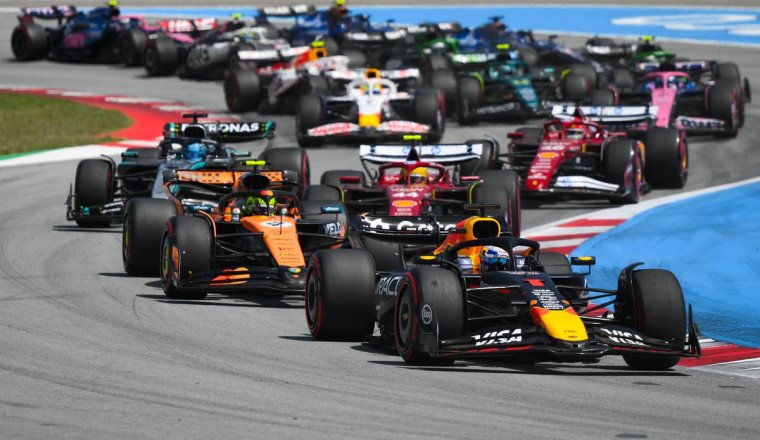
Formula 1's supposed new era with tighter controls on flexing front wings started, at least on the surface, almost indistinguishable from the first third of the season.
But there was a lot more going on at the Spanish Grand Prix than one simple narrative would lead you to believe - so here are 11 things we learned from Barcelona.
It was telling that already before Spain Red Bull had publicly and privately softened its narrative about the impact of tougher tests on front wing flexing. But it was still hopeful it would peg back McLaren and reset the competitive order, while Ferrari was talking of it as a "game-changer".
Well, if it was, the frontrunning teams learned the new rules about as quickly as each other, and there was no great difference to the competitive order in either qualifying or the race.
McLaren was on top, Red Bull was more of a threat at a circuit likely to suit its car anyway, while Ferrari and Mercedes squabbled over who would be third-best as their respective Saturday/Sunday strengths played out more or less as before.
During the weekend, McLaren chief designer Rob Marshall had quipped "what loss of performance?" when asked how the team could mitigate the impact of the new tests. It had done nothing apart from affix one small new hanger and saw no performance loss.
Others spoke similarly. Red Bull admitted it was a "very, very minor impact" and a "slight characteristic change". In terms of benefits, it might have slightly helped the RB21 as less flexing means less of a challenge to control how much it flexes in key areas - and that's the really tricky bit. So it has potentially simplified how Red Bull runs its car and means the RB21 will work a little more consistently.
Ferrari ended up admitting that at most it shifted things by a tenth, although there was no real evidence of that - and Fred Vasseur's claim that you can "change completely the grid" with that kind of time gain or loss was a bit of a stretch, especially as there were no obvious winners or losers in qualifying.
McLaren's rivals simply need to look elsewhere - and maybe finally at themselves - for where their deficit is coming from.
As Mercedes team boss Toto Wolff put it: "Maybe sometimes we try to believe that there is a magic bullet in Formula 1 that's going to solve everything, but it's not the case."
Max Verstappen continues to exhibit a short fuse in situations where things rapidly fall out of his or Red Bull's control, which ended in another clash with George Russell.
The collision gave Russell a fresh chance to put the boot in, calling out Verstappen by suggesting he was a bad role model and letting himself down.
Initially, Verstappen was unrepentant but didn't say much other than calling it a "misjudgement".
On Monday, though, he admitted he was in the wrong - a rare step considering he usually stands by his moves, however aggressive or controversial.
Perhaps motivated by some suggestions it had been deliberate, including from Russell, Verstappen posted on social media it was "not right and shouldn't have happened".
That should draw a line under the matter, but Verstappen's bigger issue is he's now on the brink of a one-race ban, which looks a real threat.
He will be one licence penalty point away from that for the next two events, and then three penalty points from a suspension from the start of July until the end of October.
Bolting on a set of brand new soft Pirellis and Max Verstappen's penalty helped Nico Hulkenberg to an unexpected fifth place. But while circumstances and the veteran's opportunism contributed to that result, this was a genuinely strong weekend for Sauber as Hulkenberg felt "we made a big step in terms of fighting with the other midfield teams".
Even if nobody had retired from the race, Hulkenberg would have finished in ninth place fair and square thanks to good pace, a well-executed strategy, and perhaps a little good fortune at the start when he jumped from 15th to 11th, assisted by a trip through the run-off that resulted from first-corner contact with Alex Albon that was triggered by Liam Lawson's moment.
He then passed Fernando Alonso, making further gains strategically before his late charge. And that showed that the Sauber C45, on average the slowest car this season that only occasionally broke into Q2 prior to Barcelona, has made a genuine step.
Hulkenberg reckoned other teams were impacted more by the flexi-wing clampdown, so that suggests it could well have been a factor. But overall Sauber - including Hulkenberg - reckoned its step was primarily down to the introduction of an upgrade package including a new floor, engine cover and front wing.
Sauber wouldn't put a number on it, but the three-and-a-half-tenth gap between Hulkenberg, on the new package, and Gabriel Bortoleto, who ran the old package on Friday before switching, in FP2 is reckoned to be broadly representative.
Sauber has more upgrades to come and now has a car that can score points on merit. After some frustrating times, this could be the first signs that the team is genuinely heading in the right direction ahead of its transformation into Audi next year.
Although overtaking a Ferrari, as Hulkenberg did in the closing stages when he passed Lewis Hamilton, is still some way off being a regular occurrence.
Yuki Tsunoda's Spanish GP weekend can only be described as terrible. He qualified last in a car that was third in the hands of Verstappen, then laboured to 13th place in the grand prix.
It's well-known that the RB21 is a difficult car to get the best out of, and Tsunoda was also running the old-specification floor as a result of his Imola crash at the start of the triple-header. But the floor only explained around one tenth of the deficit of almost six tenths to Verstappen in Q1.
What surprised him most was that he felt he was getting the most out of the car, despite what he described as the 'core problem' of sliding of both axles. After qualifying last, he said that what he felt in the car didn't align with his result.
What's clear is that Tsunoda is struggling to emulate the driving style of Verstappen, which he believes is key to extracting the most from the car. On the team side, the suspicion is that Tsunoda must accept the need to take a different set-up approach, creating a lower performance ceiling that's more easily accessible, something that will doubtless be discussed back at the factory as his weekend is analysed.
Tsunoda has now contested seven races (and a sprint) since his sudden promotion to Red Bull but has scored just seven points.
And with Red Bull also surprised by his Barcelona struggles, there are inevitably question marks over his future given Isack Hadjar's strong form for Racing Bulls.
Red Bull has no intention of replacing Tsunoda before the end of the season, and would ideally like him to thrive so he can remain in 2026. The trouble is, the current performance trend means that its hand might be forced if Tsunoda can't reverse it.
Lewis Hamilton's first season with Ferrari has been an emotional rollercoaster.
And even though a sixth-place finish actually falls into the top half of Hamilton's race results so far, Barcelona was his worst race yet.
He was easily caught and then asked to move aside for team-mate Charles Leclerc, was passed with ease by a Sauber, and then was convinced on the cooldown lap after the race that something was wrong with his car.
After the race, Hamilton said there were "zero positives" and repeatedly said, "I'm going home" when asked what his plan to fix things for Montreal is.
He even mused "it's probably just me" when asked about the car issue.
Though team boss Fred Vasseur did claim there was a late-race car issue on Hamilton's side, that alone can't explain Hamilton's most painful Sunday with Ferrari yet.
Fernando Alonso finally scored his first points of the season in Spain, but the big revelation at Aston Martin was the news that Lance Stroll has been suffering discomfort in his right hand and wrist for the last six weeks.
That prompted his withdrawal ahead of the Barcelona race so he can undergo a procedure to address his injury.
There was some confusion and paddock rumour around the circumstances of Stroll's withdrawal this weekend - "bull***t" according to chief trackside officer Mike Krack - although his medical condition was accepted by the stewards and verified by follow-up checks.
What is still unclear though is why it's taken so long for this issue to come to light or be addressed, given it is said to be related to the pre-season injury Stroll suffered in 2023, when he somehow recovered from wrist surgery within a fortnight to be able to race in that year's season opener.
And Aston Martin is not offering a timeframe for recovery on this occasion, so whether Stroll will be back in the car immediately, when it is likely he will be racing pain-free, and when he can be back to his best, are further unknowns.
We already knew the 2025 Williams harboured a lingering weakness that has been in the DNA of its ground-effect cars since 2022. But until Spain we didn't realise how bad it still is - or, perhaps more appropriately, how costly it could still be in the F1 midfield.
"The moment that you put combined forces on this car the downforce falls away," Carlos Sainz explained.
"That's why we like long straights, short corners. The longer the corner, the more time we spend in a combination, the car has no downforce or has very little downforce compared to what it produces at lower angles.
"It's something we cannot solve immediately, it's something that the team has improved a lot compared to last year, but still this remains the main weakness of the car."
With that being exposed badly at Barcelona, particularly at Turn 4 and Turn 12, and the field being extremely condensed, for the first time this year Williams spent a grand prix weekend looking thoroughly average.
At one stage a double Q1 elimination looked extremely possible, and Sainz did indeed get knocked out at the first stage, although Alex Albon overachieved by almost getting into Q3.
In the race, everything fell apart early on when both drivers picked up front wing damage in separate incidents. The pitstops this required put them on a hiding to nothing, but the underlying issue was the lack of pace.
Flavio Briatore said during the Spanish GP weekend that more time was needed to judge Franco Colapinto after he replaced Jack Doohan at the start of this triple-header, and Barcelona was Colapinto's first real race after a baptism of fire (and a crash) at Imola then an unenviable trip to Monaco while short on time in the car and confidence.
Then Colapinto's Barcelona efforts were compromised by a gearbox problem in qualifying that robbed him of a chance of getting into Q2. That had looked possible after an underwhelming weekend came alive on his second Q1 run, which was decent if aided by track evolution.
In the race, Colapinto never got going. He was stuck at the back of the midfield and had what Briatore called "a disappointing race, not progress as much as we hoped".
Colapinto didn't really show much of a spark during this triple-header, with that second Q1 lap about as good as it got. He looks several tenths off Pierre Gasly in qualifying and admits he is lacking a "bit of confidence with the car in some areas" as some corner entries "I feel a bit uncomfortable and not able to carry the speed I need".
That is not surprising given his lack of familiarity with the car, winter arrival in the team, and minimal Testing of Previous Cars running. He is on the back foot and has been placed in a difficult situation that he has not made the most of so far.
It's fair for Colapinto to have more time, and at least the five races that Alpine said he would have but that Briatore denies ever saying he would have. But right now the change is achieving nothing and Colapinto looks more adrift than Doohan did.
And to hammer that home for Alpine, it slipped back to last in the championship despite Gasly scoring points for only the third time this season in Spain.
After a season where F1 teams had been trying their hardest to turn all grands prix into one-stoppers, the Spanish GP was refreshing in throwing up what was effectively a two-stop versus three-stop battle.
And that put things on a knife-edge for a bit, as the momentum between Verstappen and the McLaren duo of Oscar Piastri and Lando Norris swung backwards and forwards over much of the race before things fell apart for Red Bull after the late safety car.
The trigger for opening up strategy was two-fold: one aspect was the mixture of high-speed corners and a very rough track surface pushed tyres to the limit.
But another was that the hard tyre - which as the most conservative option should be the default to allow drivers to eke out the one-stop - was simply too slow as it suffered a major lack of grip.
The lessons of how a far-from-ideal hard tyre could actually be a good way for spicing things up are exactly what Pirelli hopes will help in Belgium this year, when it has elected to introduce a step in its compound choices, bringing the C4, C3 and C1 - rather than the C2 - to encourage teams to be more aggressive on the softer compounds and gun for extra stops.
From the high of earning sprint pole in Miami, F1's youngest driver Kimi Antonelli hasn't scored a single point across the following triple-header.
He's been knocked out of Q2 twice and he's been robbed of points finishes at both Imola and Barcelona due to mechanical failures.
This has all come during the phase in the season where Antonelli was returning to tracks he's raced at in his junior career, the ideal platform for a step forward he hasn't made.
There were signs of the frustration taking hold at Barcelona, but it doesn't need to be panic stations at Mercedes yet. Antonelli still qualified within three tenths of Russell, and Miami was evidence that the potential is there.
This coming break is the perfect time for Antonelli to reset mentally and make sure he starts realising more of that potential.
With Formula 1's 2026 calendar set to be revealed soon and including a race at Barcelona as a back-to-back with Monaco, doubts about its immediate future will be erased for now.
However, as preparations continue for Madrid to host its first F1 race next season, the chances of Spain having two regular grands prix longer term appear to be very slim - especially as talks advance with Thailand for it to be added to the schedule over the next few years.
But for all the downsides that the Circuit de Barcelona Catalunya has, as its infrastructure plays catch-up with the ever-increasing demands that F1 places on venues, it still has some strong allies in the paddock.
Having signed Fernando Alonso as an ambassador, it has a political heavyweight who will likely do all he can to make sure that F1 chiefs are aware of the upsides of keeping the venue on the schedule.
"I don't think that we will lose Barcelona," Alonso declared last weekend. "Barcelona has been here for the last two or three decades, and Barcelona will be here for the next 10, 20, 30, 40 years.
"Some of the venues will be just momentarily on the calendar and then probably they will disappear again. So, we cannot lose Barcelona."
The fact that the layout remains one of the most challenging for cars and tyres, as well as being a brilliant test track, does at least give F1 good reason to think it can hold its own, especially if the crowds keep coming and are entertained by what is on offer.
And while everything is still said to be on track with construction at Madrid, the lessons of Valencia show that venues that look like they are here for the long haul can quickly disappear - so F1 may well need to have Barcelona as a fallback.









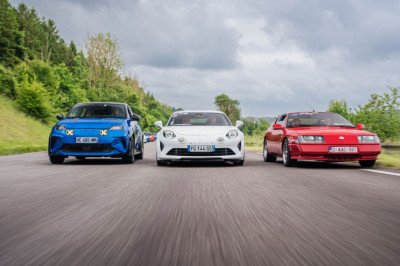
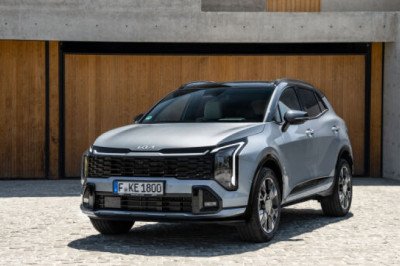
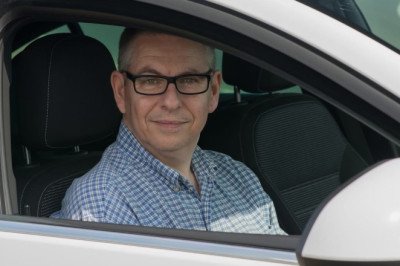
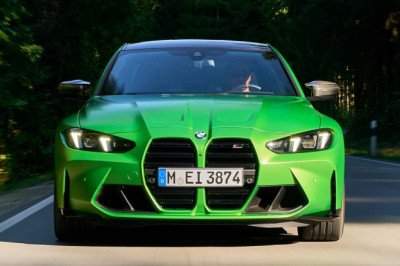
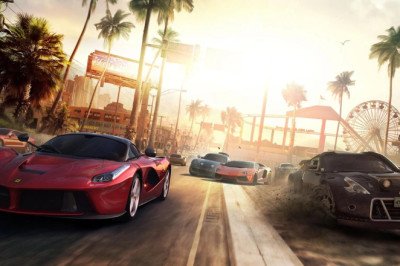
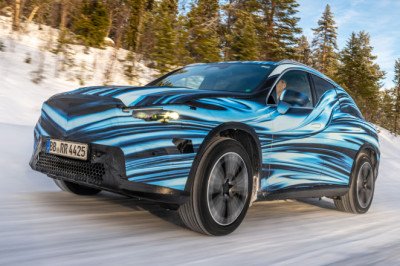
Facebook Conversations